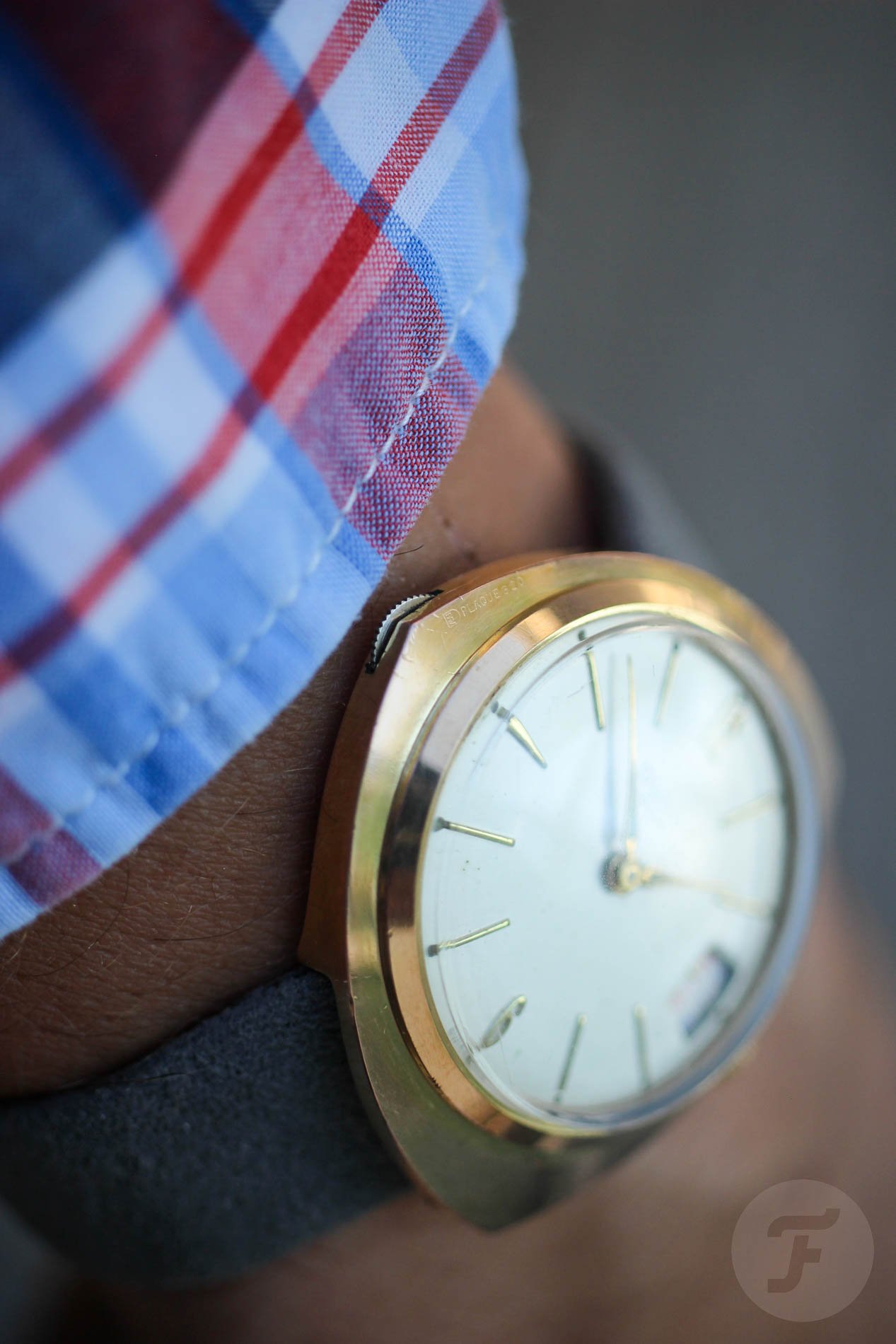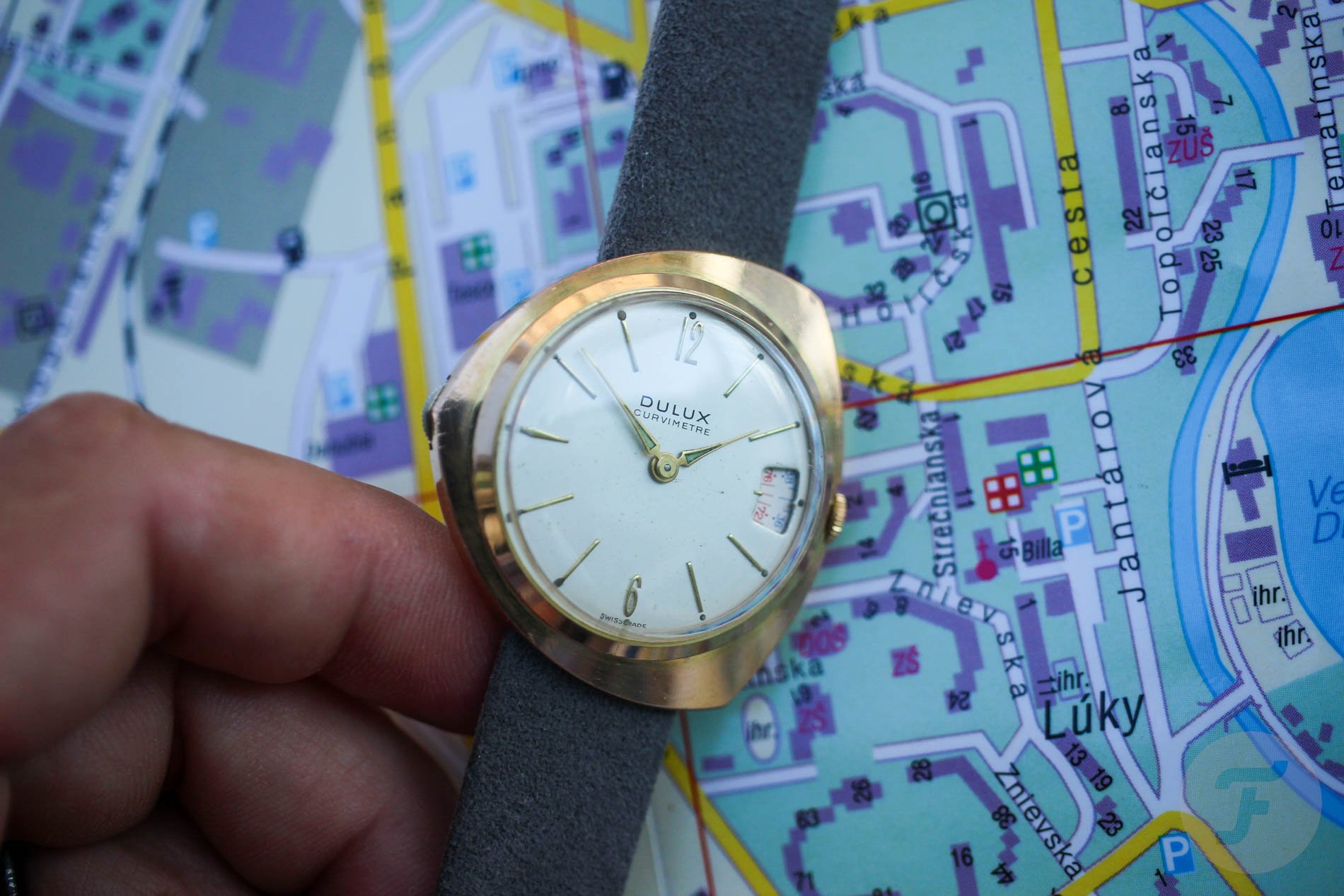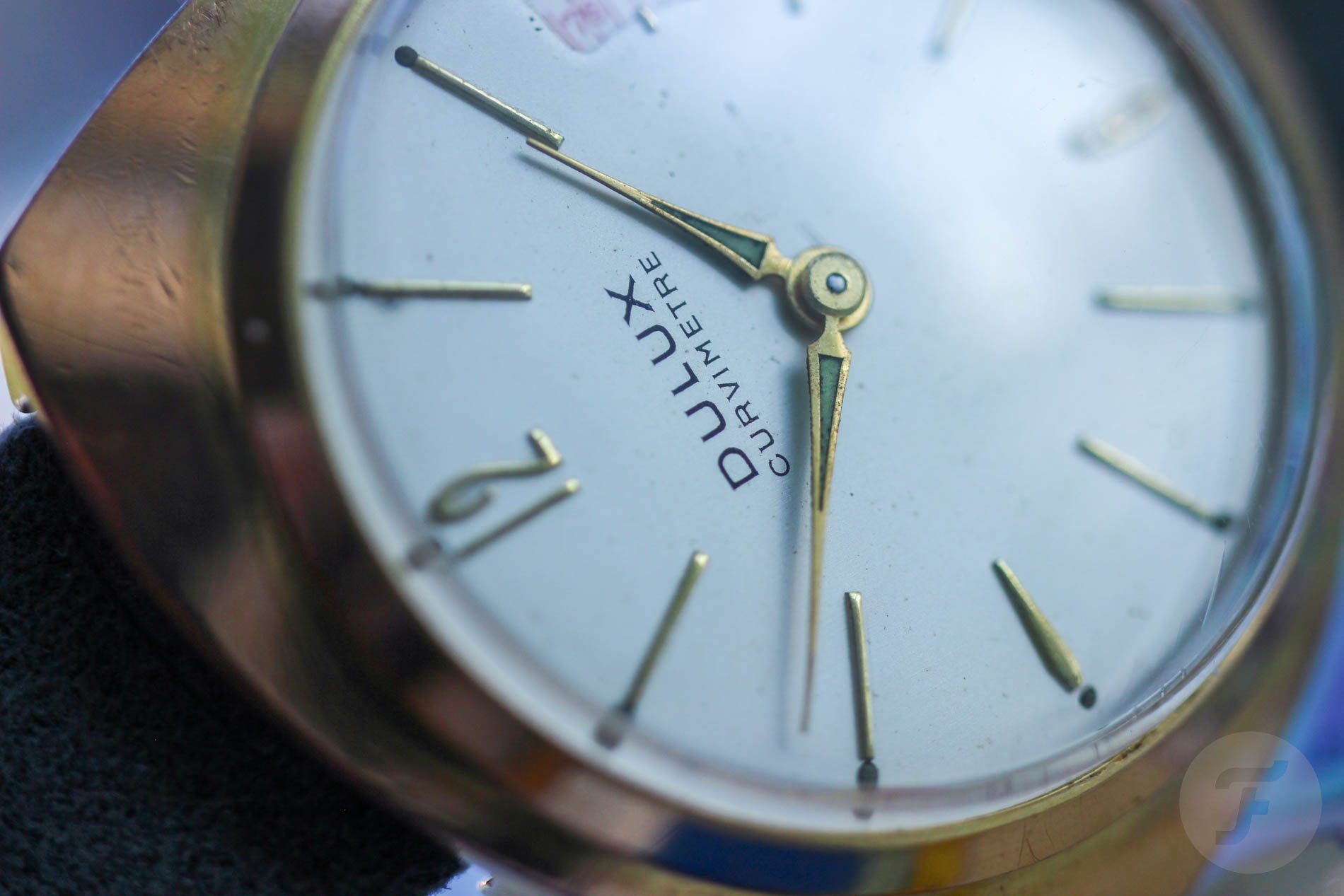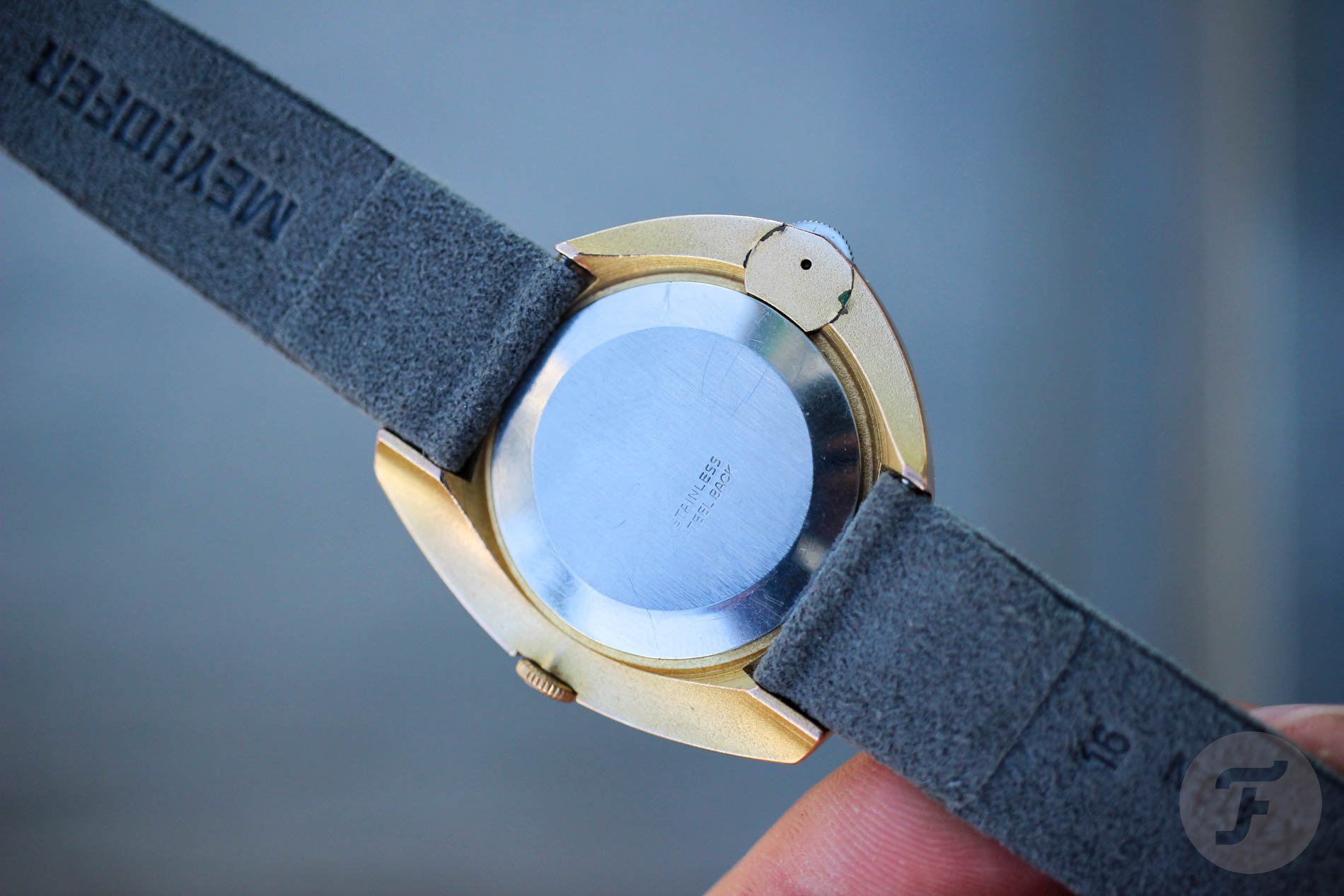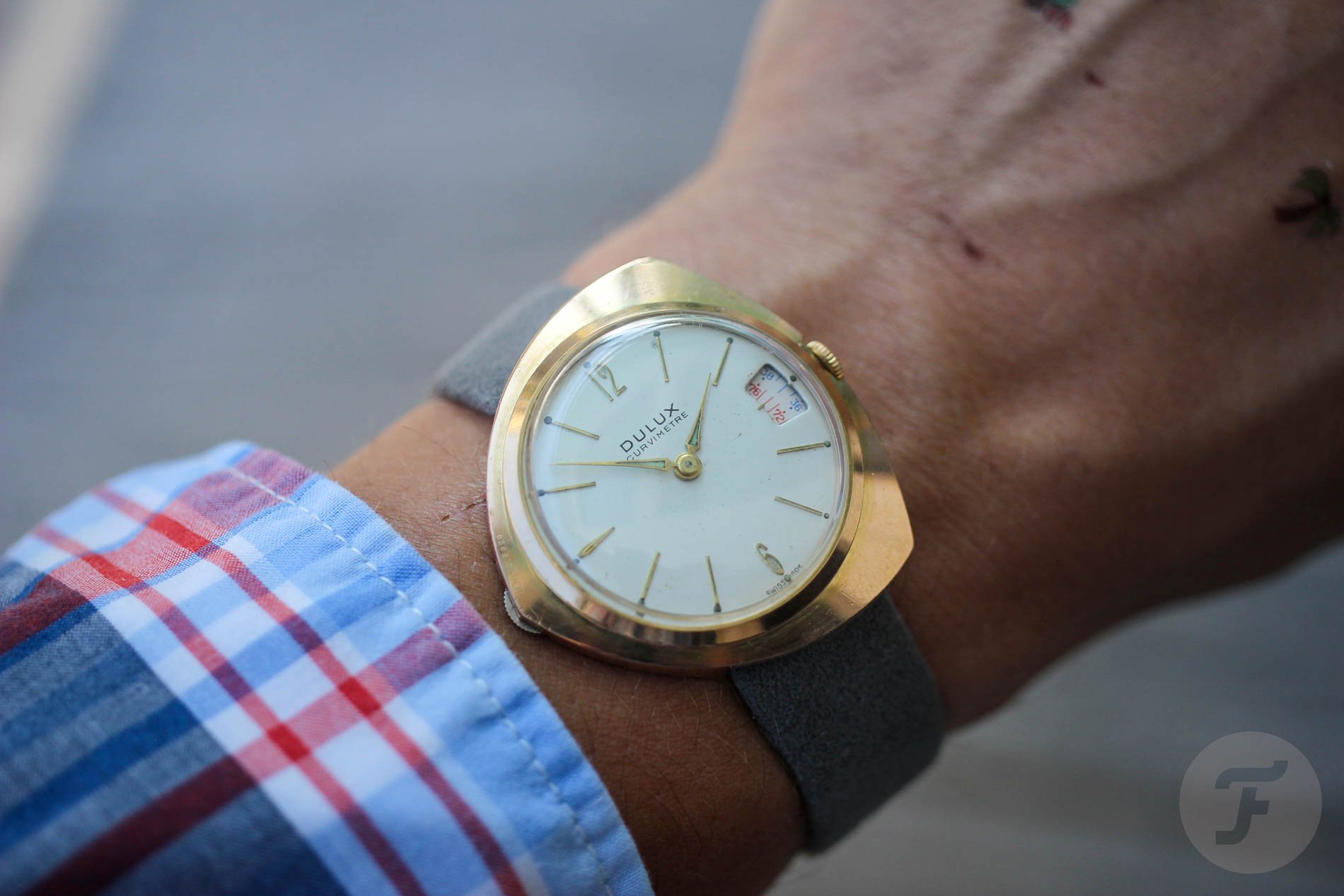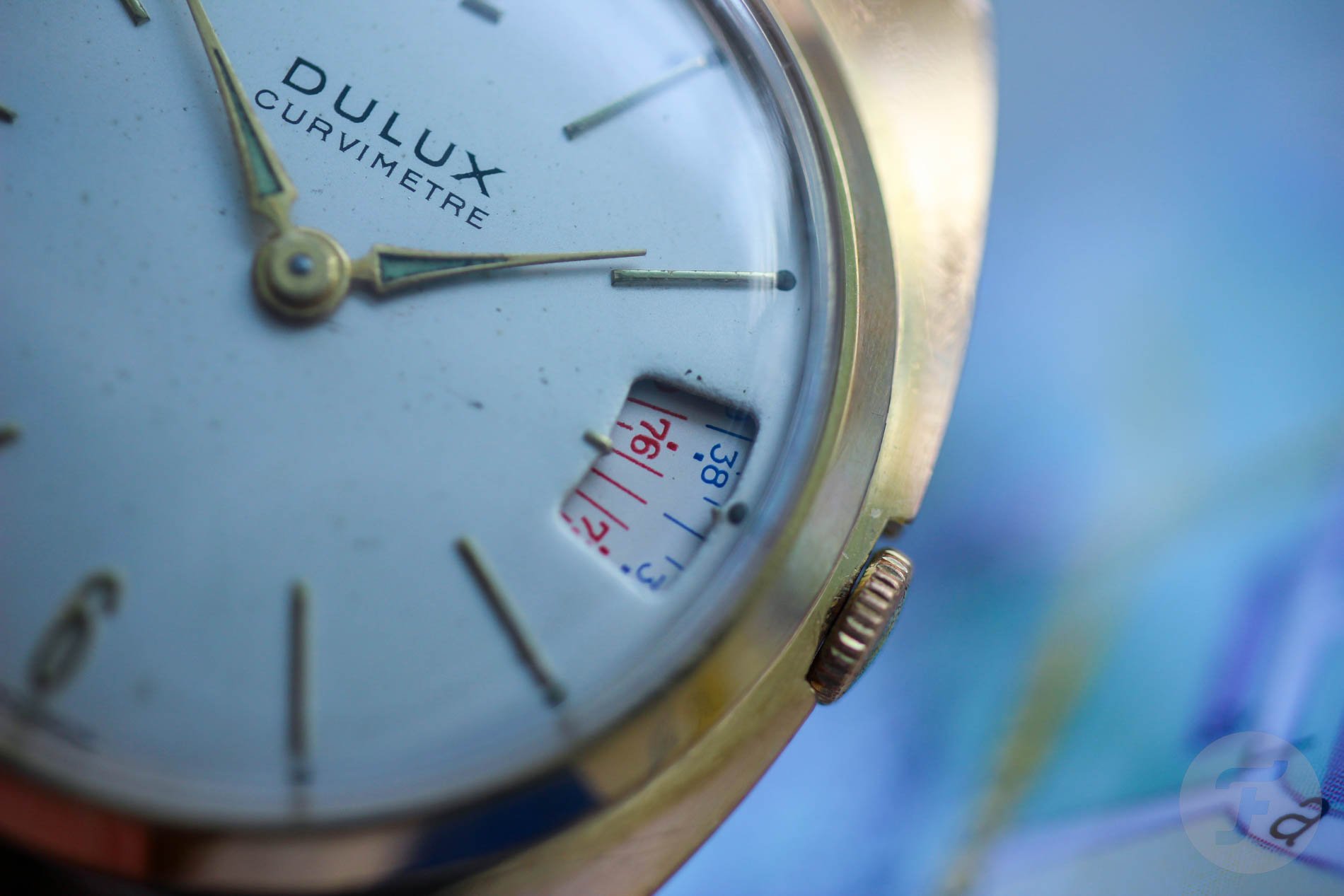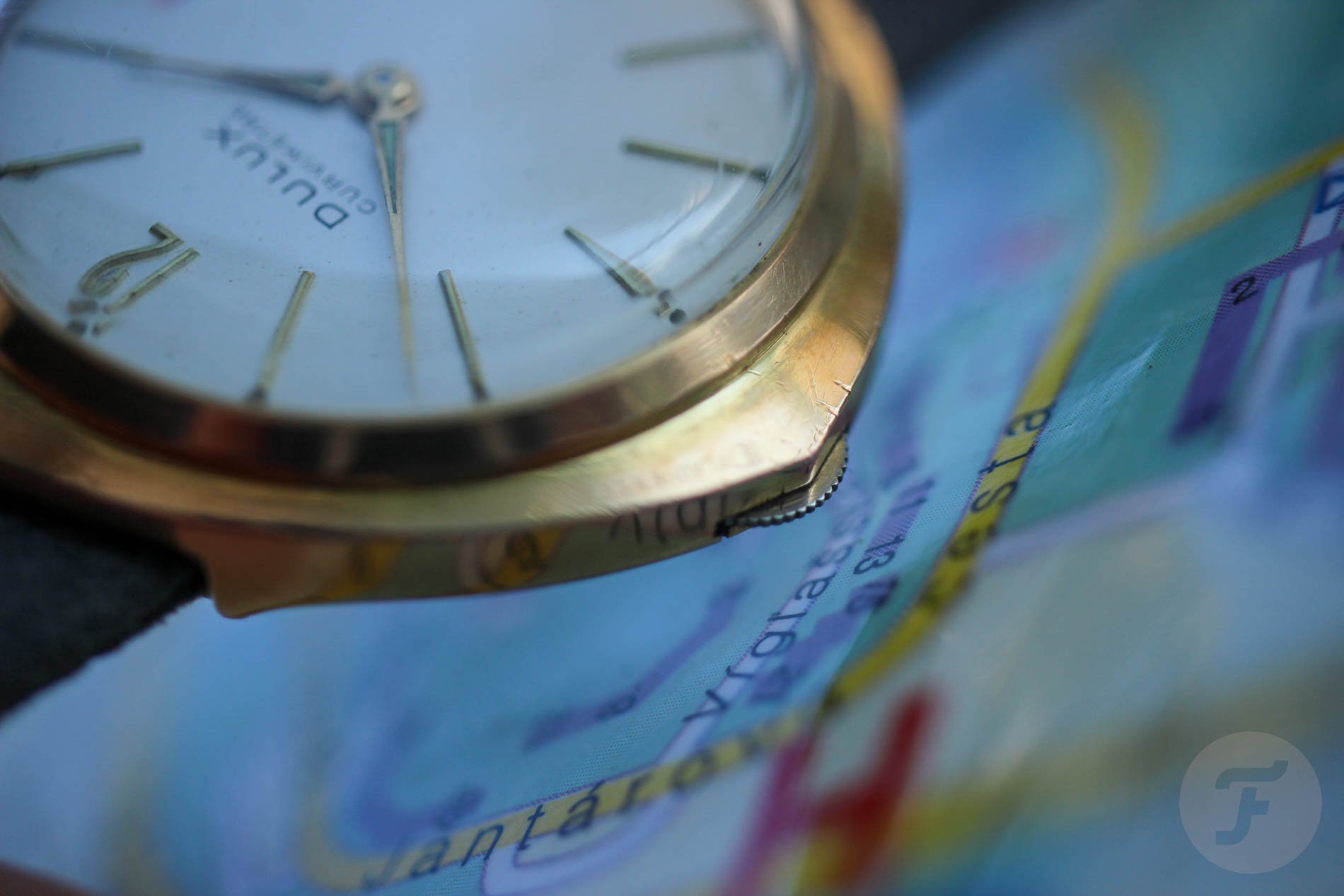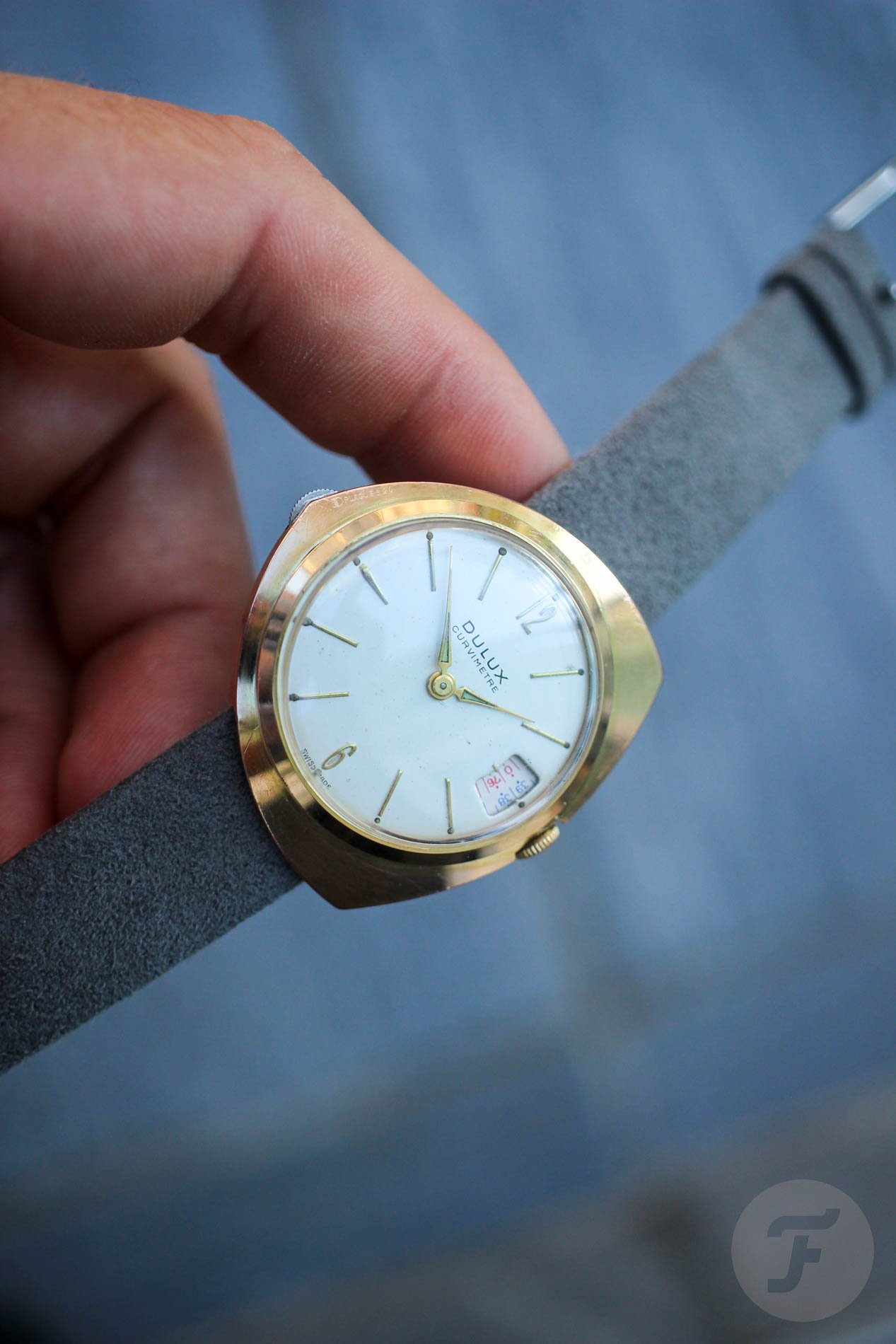#TBT A Triangular Unicorn Dulux Curvimetre Finally Landed
An opisometer is a small instrument with a tiny gear wheel integrated into its edge that you run along a surface to measure the length of curved lines on topographic maps, charts, schemes, and plans. It’s also called a map measurer, meilograph, or curvimeter, and believe it or not, someone made it into a watch complication. Meet the Dulux Curvimetre.
It has been three years since I first learned about the Dulux Curvimetre from Sandy, my watch-collecting friend from Switzerland. Since I introduced her eclectic collection to Fratello readers here, she politely declined my two or three offers to buy her Curvimetre. Well, that didn’t surprise me, but about once a year, I tried to ask anyway.
A big miss
No Curvimetres came up for sale on auction sites I follow. However, when I did one of my random Google searches on the Curvimetre, I could not believe my eyes. A full set of a chromed Dulux Curvimetre had popped up, but I’d missed it. I bumped into it a few weeks after the auction ended. A premium auction house had listed it, and the watch sold for peanuts. You can imagine how intense my frustration and surprise were. Two whole years passed since then, and I spotted no other Dulux Curvimetres for sale.
A Christmas surprise
The day before the end of last year, I opened my email box and saw that I’d missed one email from an unknown sender. I clicked on it. “My name is Carolyn, and I found your article about the Dulux Curvimetre watch. I have one that has been sitting on my desk for several years. Honestly, I can’t even remember where I got it, I just remember that I loved the shape. I might have it worked on and wear it someday. Now, I have been selling items in antique malls for the past 25 years and have recently retired and am just selling things on eBay now.”
Now, you can imagine how excited I was. The email was about a week old, so I was afraid that I was a bit late with my answer. Fortunately, Carolyn still had the watch. Although her Curvimetre was not running, I was pretty sure that my watchmaker could get it operational again. I sent Carolyn a fair offer, and after a few days, she responded that she’d decided to sell the watch to me. It took me the better part of a year to get it working again, but the results are satisfactory. The watch is ticking strong, and it’s ready to be “sported” again.
Who was the Dulux Curvimetre for?
With only three examples known to me so far, there is quite literally no information available on the Dulux Curvimeter. What keeps bugging me is the question of who Dulux intended this watch for. From today’s perspective, I can imagine using it to measure hike lengths. I am old school, and I still like to buy big folding tourist maps. But look at the dial! Does this look like an adventurous sports watch to you?!
A wheel protection
I may understand the triangular shape. If you look at the wrist shot, you can see that the wheel is nicely protected. It actually sits in the safest place possible when strapped to the wrist. I did not disassemble the mechanics of the measuring wheel, but they look pretty delicate, so protection against unintentional knocks while wearing the watch is essential. The shape itself is probably the major prerequisite for a “cocktail watch.”
The dressy dial design suggests that the watch might have had other, more apparent uses. I don’t know how to date the Dulux Curvimetre precisely, but it was most certainly born in an era before mobile screens or GPS. So my other explanation — or let’s say “speculation” — is that it was meant for professionals who needed to work with maps quite often.
It’s too elegant
The thin dagger-shaped hands are almost theatrical, and extra-long hour indexes with nicely shaped Arabic numerals at 12 and 6 o’clock give the dial a musical touch. This highborn, elegant design is slightly soiled by patina, which has developed over the decades. It’s strange to say this, but some watches don’t age nicely. This Curvimetre is not the nicest watch for me, but it doesn’t ruin the admiration and fascination I feel. Did you notice there is no seconds hand? It’s missing by design.
How it works
This watch functions like any other curvimeter. You take a map and simply roll the Dulux Curvimetre’s wheel along a chosen route, and the device will conveniently measure the distance in centimeters or inches as you go. Reading the number on the disc through the aperture in the dial, you end up with a final number you then multiply by the map scale. If the scale is 1:63,360, then one inch on the map represents 63,360 inches or one mile on the ground. And that is actually what the blue track shows. The other red track is calibrated for 1:126,700 scales, for which half of an inch represents one mile on the ground.
Last thoughts on the Dulux Curvimetre
I am so happy that my Dulux Curvimetre hunt is over, and now I can put it among the most unusual wristwatch complications I have ever seen. I found it as genuinely amusing and unique as the Pierce Correctomatic or Mido Radiotime. Admittedly, I think the dial is a bit too elegant for what I wanted to use the Curvimetre for, but that won’t stop me from taking it on my Yellowstone trip. So, when you see me there rolling my watch over this $15 Yellowstone National Park Map in 1:126,720 scale from National Geographic, you’ll know I am planning my next hike. Happy hunting!

